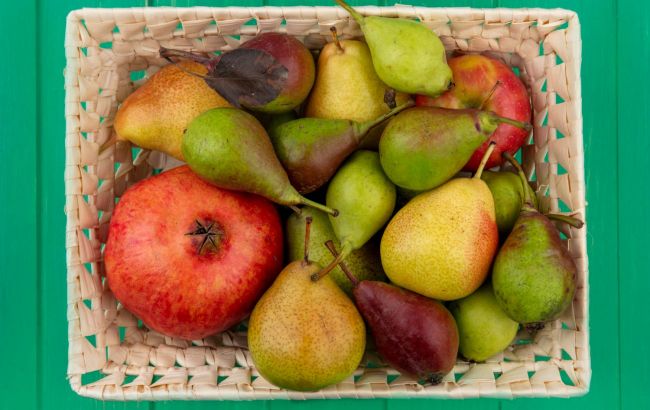Top 5 fruits to beat oatmeal in fiber content
 Fruits that contain more fiber than oatmeal revealed (photo: Freepik)
Fruits that contain more fiber than oatmeal revealed (photo: Freepik)
Oatmeal is not the only champion in fiber content. Some foods provide even more benefits for digestion and overall health, reports Eating Well.
Daily fiber intake
The daily fiber intake depends on age, gender, and level of physical activity. General recommendations look like this:
- Women under 50 years old – about 25 g per day
- Men under 50 years old – about 38 g per day
- Women over 50 years old – about 21 g per day
- Men over 50 years old – about 30 g per day
These numbers include both soluble and insoluble fiber, and it is desirable to get it from various sources – vegetables, fruits, whole grains, and legumes.
Fiber also helps protect against weight gain and reduces the risk of chronic diseases, including type 2 diabetes, heart disease, and cancer.
Of course, whole grains such as oatmeal can help meet the daily fiber requirement. For example, half a cup of dry oats contains 4 g of fiber.
However, some fruits contain even more fiber than a bowl of oatmeal. In addition, they are rich in vitamins, minerals, and antioxidants.
Which fruits are high in fiber
Avocado (1 piece contains 10 grams of fiber)
Green avocado is so versatile and tasty that it can be used in almost any type of recipe, from salads to smoothies and guacamole.
From a health perspective, avocado is probably best known for its heart-healthy fats. But its fiber can be just as important for health, especially for the gut.
For example, studies show that the fiber in avocados can stimulate the growth of beneficial gut bacteria. In turn, this can lead to the production of compounds called short-chain fatty acids, which feed your gut and protect it from inflammation.
Blackberries (1 cup = 8 g of fiber)
All berries are rich in fiber, but blackberries are almost the leader. But that is not the only reason to love them.
Blackberries are also packed with nutrients and health-promoting compounds, including antioxidants such as anthocyanins, ellagitannins, flavonols, and flavanols.
These powerful compounds help neutralize disease-causing free radicals associated with heart disease and cancer.
In addition, the large amount of vitamin C in blackberries provides even greater antioxidant action. Vitamin C from blackberries also improves iron absorption.
Raspberries (1 cup = 8 g of fiber)
Like blackberries, raspberries contain a high amount of fiber. They are also rich in protective anthocyanins, flavanols, flavonols, and ellagitannins. Combined, they may have powerful disease-preventing properties.
Studies have shown that consuming from 1 to 1.5 cups of raspberries daily can have a beneficial effect on blood glucose levels, insulin, and cholesterol in people at risk for chronic diseases.
Pear (1 medium fruit = 6 g of fiber)
One pear provides approximately 20% of the daily fiber requirement. This is 30% more than about 4 g of fiber in an average apple.
These sweet and juicy fruits are rich in sorbitol, a sugar alcohol that has a natural laxative effect.
Pomegranate (1 cup of pomegranate = 7 g of fiber)
They are rich in phytochemicals including anthocyanins, tannins, and flavonoids, which have been shown to have antioxidant, anti-inflammatory, and anti-tumor properties and protect against heart disease.
Research also shows that pomegranates contain compounds called polyphenols that promote the growth of healthy gut bacteria.
You may be interested in:
This material is for informational purposes only and should not be used for medical diagnosis or self-treatment. Our goal is to provide readers with accurate information about symptoms, causes, and methods of detecting diseases. RBС-Ukraine is not responsible for any diagnoses that readers may make based on materials from the resource. We do not recommend self-treatment and advise consulting a doctor in case of any health concerns.

